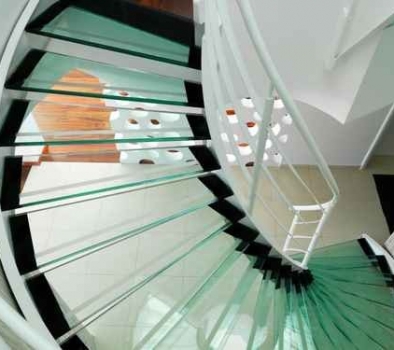Laminated glass is created by bonding glass panes with one or more layers of PVB (polyvinyl butyral) film. The lamination process is carried out in an autoclave, where combinations of glass and PVB film are placed. The pressure in the autoclave of approximately 12 bar and the temperature of 140 *C causes a permanent bond between the glass and the PVB film. This creates a glass that does not lose its protective function, even if broken.
In the event when the laminated glass breaks, a layer of film holds the glass pieces in a fixed and unchanging position.
Mechanical properties of laminated glass depend on its construction, i.e., combination of thickness, type of glass and the number of layers of PVB film.
Laminated glass can have the following functions:
- Safety glass – the most popular type of laminated glass. Used in the construction industry where it is necessary to minimize the risk of injury. Even broken glass is still a protective barrier to the user.
- Protective glass – higher strength glass (P1A-P2A class) is able to withstand manual attack and impact of a thrown stone, for example.
- Burglar resistant glass – class from P2A to P8B, depending on the class it is able to withstand an attack with blunt objects. Resistance depends on the duration of the attack or the type of used objects. Burglar resistant laminated glass is used in storefronts, glazing in banks, jails, museums.
- Bulletproof glass – resistant to small arms bullets penetration. Usually, the glass has four or five layers of different thickness of glass and PVB film, depending on the bullet resistance class. Laminated bulletproof glass is used wherever the highest degree of protection must be provided.
- Laminated glass with toughened glass as a base – a product that combines the advantages of toughened glass, i.e., high mechanical strength to impact and bending, with the safety and protection provided by laminated glass. It is used in railings, elevator shaft walls, floors, stair treads, building facades.
In addition to a wide range of mechanical properties, laminated glass also has an acoustic protection function. Noise is an environmental factor which can be harmful to humans both physically and mentally. Laminated glass has exceptionally good noise suppression properties. It reduces noise levels much better than ordinary glass of the same thickness, and in the case of using special PVB film, so-called acoustic laminated glass can meet even the most restrictive acoustic protection standards.










